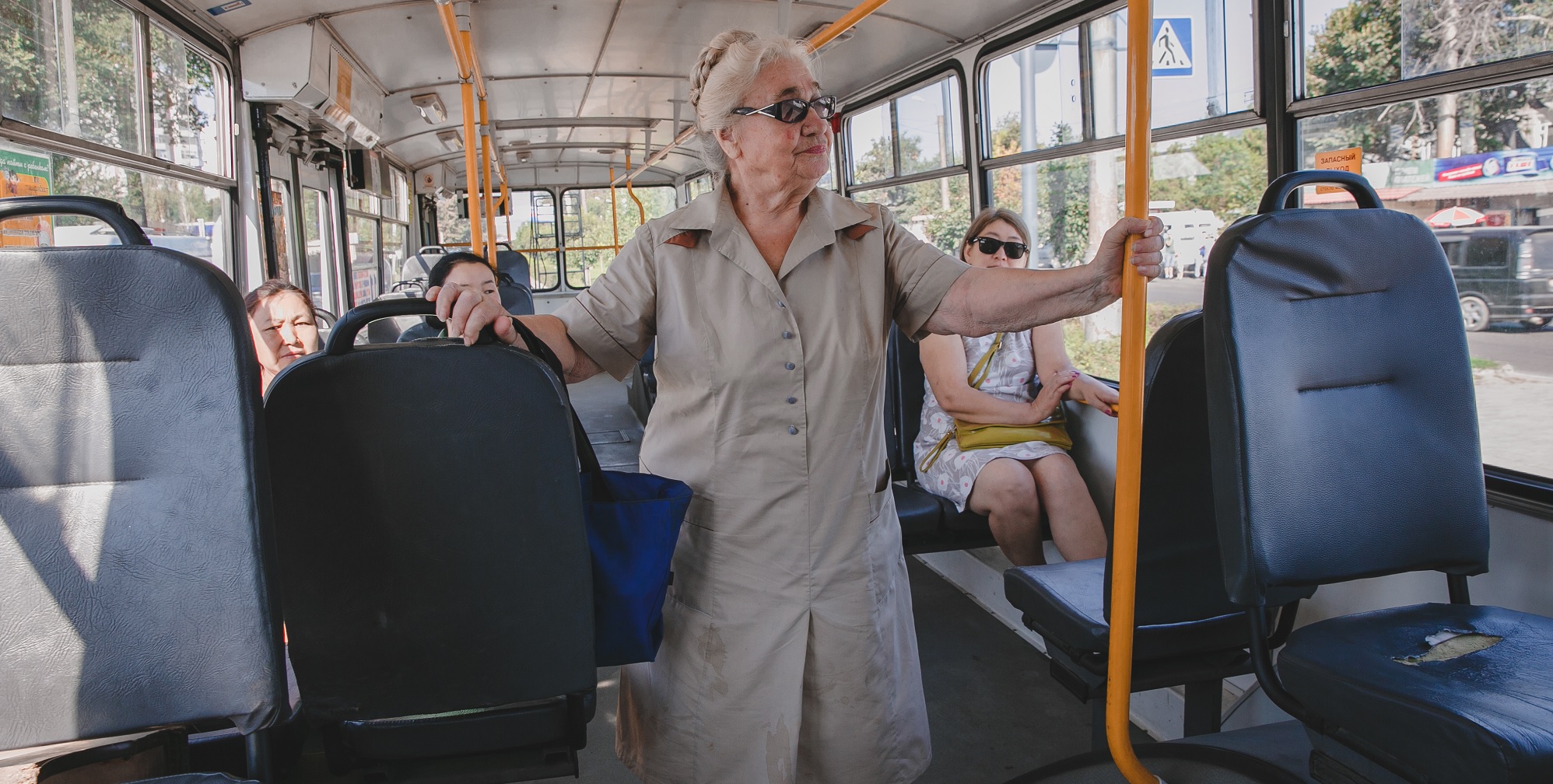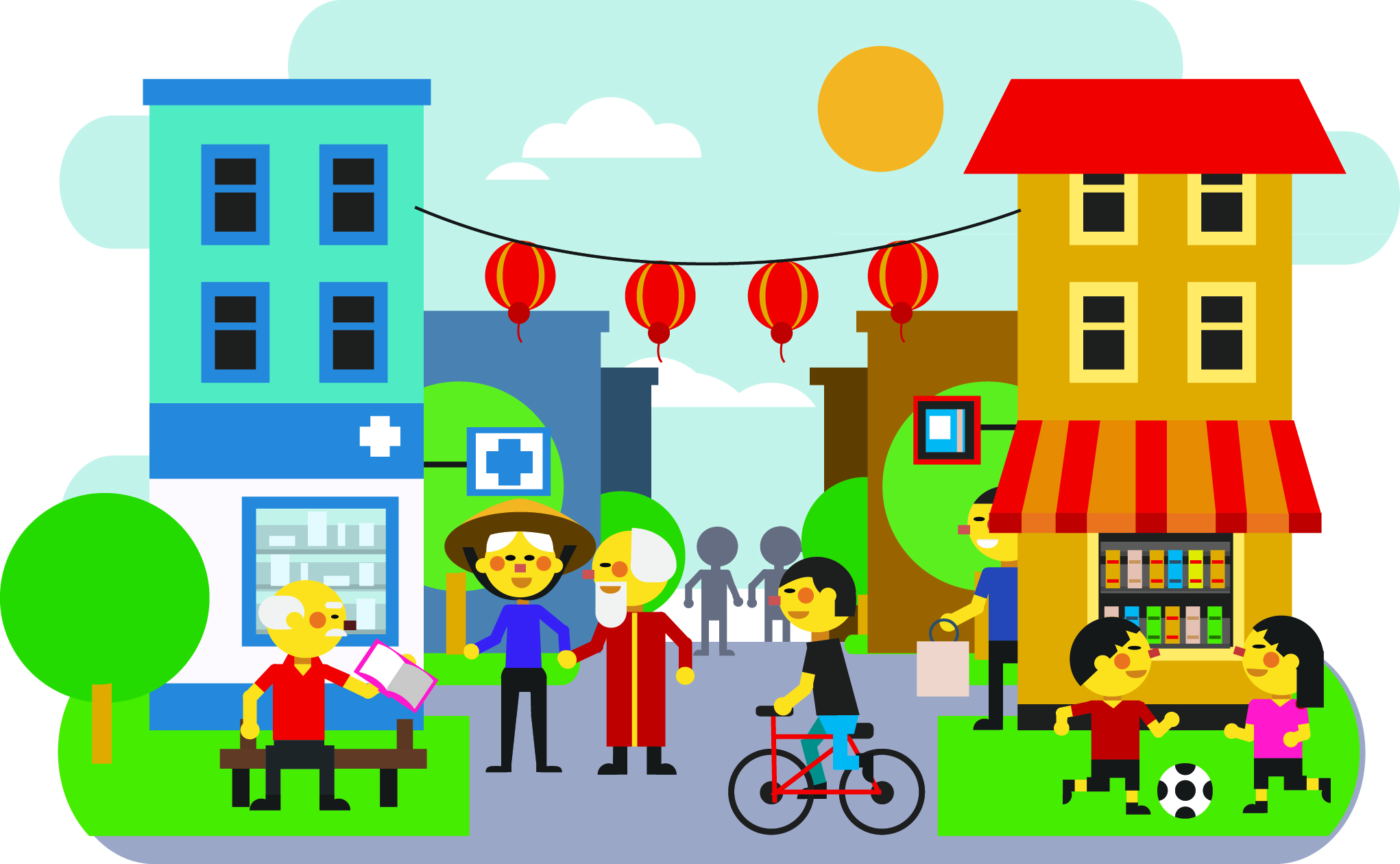
(c) Malik Alymkulov/HelpAge International
Vera finds that bus drivers sometimes refuse to stop because older people only pay half price
By Ben Small
Urban development must ensure cities are inclusive, welcoming and supportive places that actively protect and promote older people’s rights, our new report launched ahead of Habitat III argues.
This is a pressing issue. The combination of population ageing and urbanisation – two century-defining demographic trends – means there is a significant number of older people in cities, and the figure is growing.
More than 500 million people aged 65+ live in cities, 289 million of whom are in low and middle-income countries. This amounts to more than half of all older people and goes contrary to the belief that older men and women are more likely to live in rural areas.
Launched in the build-up to the UN’s urbanisation conference Habitat III, Ageing and the city: making urban spaces work for older people explores the issues older people face in urban environments and makes a number of recommendations for governments and city planners to improve.
How are cities unwelcoming places for older people?
The development of cities has long been centred on car use, prioritising vehicular traffic and discouraging the use of streets and public spaces.
This restricts older people’s participation in community life, contributing to social isolation, making street-based, informal work unsafe, and leading to unhealthy, sedentary lifestyles.
Encouraging car use impacts air quality. Air pollution contributes to high rates of non-communicable diseases and kills seven million people every year – older people are disproportionately affected because naturally declining lung function leave them more vulnerable.
As more and more people reach older age in cities, the number of people living with dementia in an urban environment will increase too. It is a disorientating condition that can cause people to become forgetful and lost even in familiar places. The design of urban environments, therefore, has a big impact on how people experience dementia. For example, similar street layouts with grid systems and poor visibility can be problematic.
Older people’s safety and security in cities, meanwhile, is affected by crime and the threat of humanitarian emergencies.
Conflict is increasingly urbanised, with cities becoming key strategic sites in confrontations between opposing regimes, ideologies and miltias.
Furthermore, urban growth is occurring in areas prone to earthquakes, droughts and floods, according to the United Nations Office for Disaster Risk Reduction. During emergencies such as these, older people are among the most vulnerable.
“For some of us, it is difficult to get downstairs when there is an earthquake alert, so we stay where we are,” an older women from Mexico’s capital Mexico City says in the report.
“If you can get out, you get out. If not, you stay there and die because nobody is going to come and help.”

How can cities be improved for older people?
To make cities more inclusive and supportive, there needs to be a shift towards reduced car use and traffic speeds, and the promotion of cycling, walking and public transport.
“Urban spaces should be welcoming, dense and mixed use to create vibrant and diverse communities that allow people of all ages access to a broad range of services,” said Sion Jones, Urbanisation Policy Officer at HelpAge International.
“Public and green spaces should be plentiful to encourage physical activity and social interaction.”
Across nine cities in Ukraine the civil society organisation Turbota pro Litnih v Ukraini has helped increase older people’s use of public transport by extending routes to poorly served areas, obtaining free off-peak travel and securing mechanisms to report discriminatory bus services.
By lessening the need for car use and supporting older people to be active, improved air quality and increased exercise will help lower rates of non-communicable diseases.
To tackle the challenge of dementia in cities, city design should ensure neighbourhoods retain their unique identities and landmarks to help those with the disease can better recognise their surroundings.
In the Bolivian cities of Cochabamba and Santa Cruz de la Sierra, recognition of dementia among the public has improved through campaigns, while volunteer groups have advocated for better trained staff and increased screenings.
Reducing the vulnerability of older people during emergencies, meanwhile, requires authorities to include them in the development of plans, Sion Jones explained.
“Older people must be involved in disaster preparedness planning to ensure their needs are understood and met in the event of a humanitarian crisis,” he said.
“City planners must also ensure older men and women’s personal safety and security, particularly in public spaces and on public transport, to prevent crime, and the fear of crime, becoming a barrier to their participation in the community.”
Ageing in cities on the agenda

With Habitat III bringing together governments and city planners from around the world, it is vital the needs of older people are on the agenda in Quito.
“Habitat III’s New Urban Agenda, along with the Sustainable Development Goals and the World Humanitarian Summit, have all recognised the compelling need to make cities inclusive,” said Justin Derbyshire, Chief Executive Officer at HelpAge International.
“This report argues for concerted action from governments and city authorities to protect and promote people’s rights no matter their age.
“We must reclaim urban space to create welcoming, supportive and inclusive cities where everyone can earn a living, stay physically active and interact with others across generations.”
The Older Persons General Assembly of Partners, of which HelpAge is a member, will be hosting a roundtable and side event at Habitat III.
The roundtable Working Together to Respond to Ageing Urban Populations: Opportunities and Challenges will take place on Wednesday 19 October, 8-10am, in room 21, Casa de la Cultura. The side event Urban Public Spaces and Older Persons will follow on Thursday 20 October, 9.30am-10.30am in room MR18 at the Casa de la Cultura.
Find out more:
- Download the report Ageing and the city: making urban spaces work for older people.
- Find out more about our ageing cities work.
- Visit the Habitat III website.
